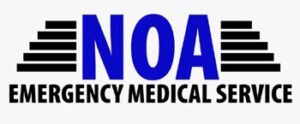Also called accrued liabilities, these expenses are realized on a company’s balance sheet and are usually current liabilities. Accrued liabilities are adjusted and recognized on the balance sheet at the end of each accounting period. Any adjustments that are required are used to document goods and services that have been delivered but not yet billed. Accountants also use the term “accrual” or state that they must “accrue” when discussing revenues that fit the first scenario.
An accounts payable is essentially an extension of credit from the supplier to the manufacturer and allows the company to generate revenue from the supplies or inventory so that the supplier can be paid. This means that companies are able to pay their suppliers at a later date. This includes manufacturers that buy supplies or inventory from suppliers.
Accruals ratio
Therefore, it is literally the opposite of a prepayment; an accrual is the recognition of something that has already happened in which cash is yet to be settled. Accounts Payables, or AP, https://online-accounting.net/ is the amount a company owes suppliers for items or services purchased on credit. As the company pays off its AP, it decreases along with an equal amount decrease to the cash account.

To have the proper revenue figure for the year on the utility’s financial statements, the company needs to complete an adjusting journal entry to report the revenue that was earned in December. For accrued expenses, the journal entry would involve a debit to the expense account and a credit to the accounts payable account. This has the effect of increasing the company’s expenses and accounts payable on its financial statements.
Accrued Expense: What It Is, With Examples and Pros and Cons
The accrual adjustment will debit the current asset account Accrued Receivables and will credit the income statement account Accrued Electricity Revenues. If the company receives an electric bill for $1,700, under the cash method, the amount is not recorded until the company actually pays the bill. However, under the accrual method, the $1,700 is recorded as an expense the day the company receives the bill. An invoice issued for a good or service is a common source of accruals. The business issuing the invoice would record the amount as accrued revenue, while the buyer would record the amount as an accrued expense.
M&A transactions: Deducting accrued liabilities – The Tax Adviser
M&A transactions: Deducting accrued liabilities.
Posted: Sat, 01 Oct 2022 07:00:00 GMT [source]
It’s easy to keep an overview and complete the task without accounting knowledge since all it entails is canceling previous entries. A business’s expenses can include any costs related to running the company such as rent, utilities, office supplies, property, equipment, and payroll. Accrued revenue may be contrasted with realized or recognized revenue, and compared with accrued expenses.
What Is the Difference Between Cash and Accrual Accounting?
The closer the earnings are to operating cash flows, the higher the quality of the earnings. The main reason why earnings can be more easily manipulated than cash flows, is the fact that earnings are subject to accruals accounting. In conclusion, a balance sheet provides valuable insights what is unearned revenue what does it show in accounting into a company’s financial position. By analyzing its components, investors, analysts, and entrepreneurs can make informed decisions about the company’s performance and potential. It is crucial to understand the balance sheet to grasp the overall financial health of a business.
This payment is considered an accounts payable (and is an accounts receivable for the supplier). You’re legally obligated to pay it in a timely fashion to your supplier. If in doubt, check with your accountant as to which method you should use. We’ve highlighted some of the obvious differences between accrued expenses and accounts payable above. But the following are some of the main factors that set these two types of costs apart. The amount of the accrued income reported on the income statement also causes an increase in a corporation’s retained earnings, which is part of the stockholders’ equity section of the balance sheet.
You’re our first priority.Every time.
Here’s a hypothetical example to demonstrate how accrued expenses and accounts payable work. Let’s say a company that pays salaries to its employees on the first day of the following month for the services received in the prior month. This means an employee who worked for the entire month of June will be paid in July. If the company’s income statement at the end of the year recognizes only salary payments that have been made, the accrued expenses from the employees’ services for December will be omitted.
- Amanda Bellucco-Chatham is an editor, writer, and fact-checker with years of experience researching personal finance topics.
- Similarly, the accountant might say, “We need to prepare an accrual-type adjusting entry for the revenues we earned by providing services on December 31, even though they will not be billed until January.”
- It lists a company’s assets, liabilities, and shareholders’ equity, all of which show its financial position at a specific point in time.
- Any adjustments that are required are used to document goods and services that have been delivered but not yet billed.
- Some businesses use the cash basis method of accounting, which records transactions only when dollars move in or out of an account.
- That’s because it doesn’t record accounts payables that might exceed the cash on the books and the company’s current revenue stream.
Balance sheets are financial statements that companies use to report their assets, liabilities, and shareholder equity. It provides management, analysts, and investors with a window into a company’s financial health and well-being. Current assets are those that can be converted into cash within a year, such as cash and cash equivalents, accounts receivable, and inventory.
The purpose of accruals is to ensure that businesses match their income and expenses accurately within an accounting year. Without using accrued revenue, revenues, and profit would be reported in a lumpy fashion, giving a murky and not useful impression of the business’s true value. The purpose of accrual accounting is to match revenues and expenses to the time periods during which they were recognized and incurred, as opposed to the timing of the actual cash flows related to them.
- If the company receives an electric bill for $1,700, under the cash method, the amount is not recorded until the company actually pays the bill.
- If the company’s income statement at the end of the year recognizes only salary payments that have been made, the accrued expenses from the employees’ services for December will be omitted.
- This account includes the balance of all sales revenue still on credit, net of any allowances for doubtful accounts (which generates a bad debt expense).
- For example, if a company incurs expenses in December for a service that will be received in January, the expenses would be recorded in December, when they were incurred.
This contrasts accrual accounting, which recognizes income at the time the revenue is earned and records expenses when liabilities are incurred regardless of when cash is received or paid. Hence the cost of the remaining five months is deferred to the balance sheet account Prepaid Insurance until it is moved to Insurance Expense during the months of January through May. Companies using the accrual method of accounting recognize accrued expenses, costs that have not yet been paid for but have already been incurred. Accrued expenses make a set of financial statements more consistent by recording charges in specific periods, though it takes more resources to perform this type of accounting. While the cash method of accounting recognizes items when they are paid, the accrual method recognizes accrued expenses based on when service is performed or received. Accrued expenses theoretically make a company’s financial statements more accurate.
